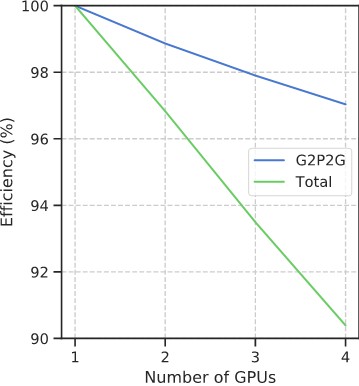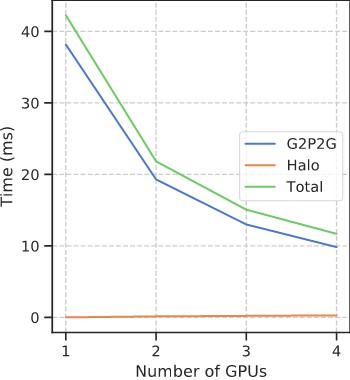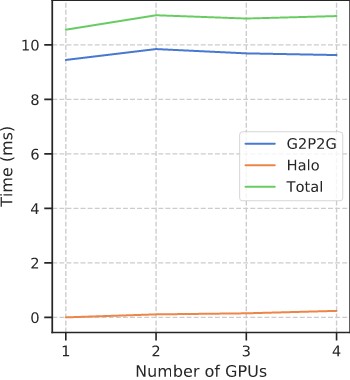Benchmark¶
Settings¶
Benchmark settings of each project are set within its directory (e.g. Projects/MGSP) independently.
General setup¶
Most configurations regarding the simulation are set in settings.h.
- Data structure related setup:
- DOMAIN_BITS: the resolution of the background grid in each dimension, e.g. 8 refers to a
 grid.
grid. - MAX_PPC: the maximum number of particles held within a cell.
- g_bin_capacity: the number of particles in each particle bin.
- g_max_particle_num: the maximum number of particles in each GPU.
- g_max_active_block: the maximum number of blocks in each GPU. This affects the memory consumption of most important data structures (particles, grid, partition, etc).
- DOMAIN_BITS: the resolution of the background grid in each dimension, e.g. 8 refers to a
- Physical parameter setup:
- g_gravity: the gravity constant.
- MODEL_PPC: particle-per-cell for sampling particles from a SDF model. per-particle-volume is computed from this and the grid resolution.
- DENSITY: the density constant of particles.
- get_material_type(int did) -> material: the type of particles for each GPU. Assume each GPU handles only one category of particles.
- Multi-GPU related setup:
- g_device_num: the number of GPUs used.
- get_domain(int did) -> domain: the spatial partition domain for each GPU. It can be set time-dependently.
Additional material setup¶
In particle_buffer.cuh, there are currently four types of particles supported. They are named JFluid, FixedCorotated, Sand, and NACC. Within each ParticleBuffer, there are various material-dependent constant parameters that could be configured.
Initial model setup¶
Initial particle models for all GPUs are set in the init_models function in main.cu.
Results¶
Multi-GPU scalability¶
The following shows the strong scalability of our multi-GPU pipeline.


The following shows the weak scalability of our multi-GPU pipeline.

